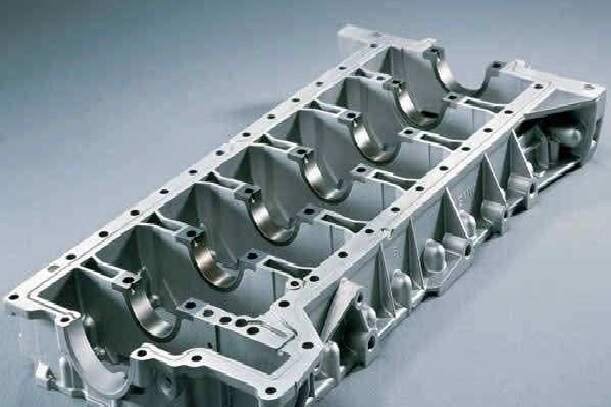In this Article,All types of Marine Diesel Engine Safety devices for safe navigation and propulsion of ship are discussed :-
The ship’s propulsion engine goes through various loads and stresses from rough conditions to extreme maneuvers and breakdowns throughout its lifespan.
So, Many safety devices are installed to protect the engine from major damage and failure to prevent any significant loss or damage to the marine engine.
Basically,Safety devices used in main engine are as follows :-
• Crankcase Relief Door
•Scavenge Space Relief Door
•Cylinder Head Relief Valve
•Starting Air Relief Valve
•Starting Airline Flame Trap
•Oil Mist Detector
Rotation Direction Interlock
•Turning Gear Interlock
Let us Discusse in detail about safety devices How Marine Propulsion Engine Of the Ship Is Protected ?
Different types of protection on the marine engine of a ship.
Generally four major types of protection systems are used to secure the propulsion engine:
1. Alarm: When the engine parameters deviate from a defined value, an audible and visual alarm will sound, giving an early warning of the problem.
2. Slow down: It is the next safety stage when steps taken are not adequate to regulate the existing problem; therefore, the engine is slowed down to counteract the disrupted parameter.
3. Shut down: The shut down safety devices cut off the fuel supply and the engine stops when there is a greater fluctuation in the engine parameters that can affect other engine systems.
4. Starting Interlock: This will not allow the engine to start from the stand-off condition if the engine has not properly operated or arranged some important system.
Alarms
1.Cooling water High temperature alarm,
2.Jacket cooling water low pressure alarm,
3.Air cooler high temperature alarm,
4.Fuel oil high temp,
5.Fuel oil Low pressure
6.Expansion tank low level alarm
7.Control air is also used for stopping the engine
8.Thrust bearing high temp trip
9.Jacket cooling water high temp alarm
10.High exhaust alarm,
11.High scavenge air temp alarm and slow down,
12.Oil Mist Detector alarm and slow down crankcase relief valve
13.Thrust bearing high temp alarm
Different Slow down situations
Lube oil pressure falls to 1.5 bar
Cam shaft pressure falls below 2 bar
There is no flow of piston cooling media (water or oil)
Oil mist detector or Main bearing sensors has been activated
Lube oil temperature at the inlet of engine is high > 60 deg C
Piston Cooling temperature is high > 75 deg C
Jacket cooling water Temperature is high > 88 deg c
Exhaust temperature Engine cylinder is high > 450 deg C
Scavenge air temperature of Engine is high > 65 deg C
Thrust block temperature is high > 75 deg C
Low flow of Cylinder lube oil
Control air pressure is low < 5.5 bar
Main Diesel Engine slow Down devices are following :-
•L.O High Temp
•JCW High Temp
•Piston Cooling High Temp
•OMD Alarm (1 pass)
•Thrust Bearing L.O Low Press
•Control Air Low Press
•Scavenge Air High Temp
•Exh Gas High Temp
Different Shut down situations
Lube oil inlet pressure to engine is very low <1 bar
Cam shaft Lube oil pressure is very low < 1.5 bar
Very high Jacket cooling water temperature >95 deg C
Low Jacket cooling water pressure < 0.1 bar
No flow of Cylinder lube oil
Thrust block temperature very high > 90 deg C
Lube oil inlet pressure for turbocharger is low < 0.8 bar
Over speed of the engine which activates shut down at 107 % of Max. continuous rating MCR
Main Diesel Engine Shut Down Safety Devices
●Low lube oil pressure
●JCW High Temperature
●JCW low Pressure
●Thrust Bearing High Temperature
●Over Speed
Interlocks
Interlocks are given so that only when certain conditions have been met, the engine can be started or reversed.
It is important to have interlocks when there is a remote control of engines.
It decreases the working personnel’s risk for engine damage and any hazards.
Different Starting Interlocks are
1.Turning gear engage interlock :-If the turning gear is engaged, this system prevents the engine from starting.
2.Running Directions Interlock :-It avoids the supply of the fuel if the engine’s running Directions is not in line with the Telegraph.
3.Auxiliary blower off interlock :-In case of constant pressure turbo charging, the Auxiliary Blower is provided.
4.Starting Air Distributor in end position:- This prevents starting from taking place if the shifting of the Distributor has not been completed.
5.Air Spring Pressure Interlock:- The Air Spring Pressure must always be controlled in the present generation of engines using exhaust valves shut down by Air Springs, otherwise the exhaust valve can not be closed.
Note :-Main Lube. Oil pressure, piston cooling pressure, jacket water pressure, and significant parameters must be above the minimum required.
Check Out Other Important Topics
Home IC Engine Electrical Important PDFs Boilers Synergy Maritime Exam Naval Arch Interview Questions Difference Between Types of Pumps Types of Valves MEO Class 4 Auxiliary Machines

